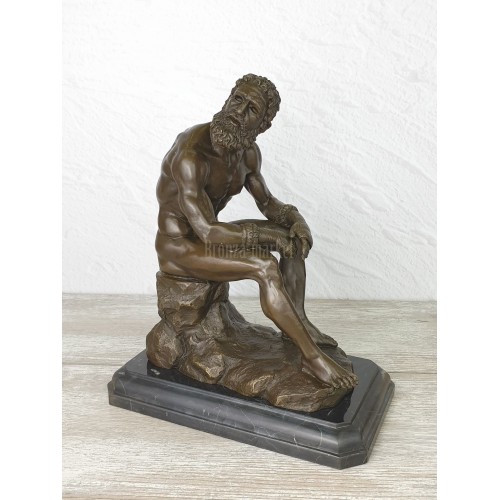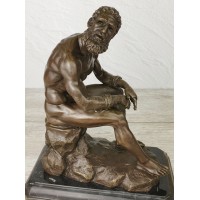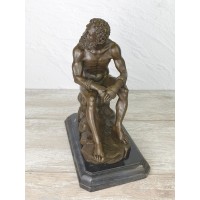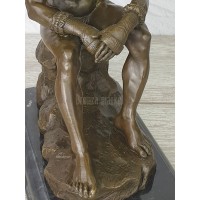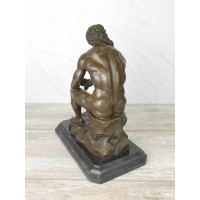Width: 9.4 In
Weight: 13.2 LBs
Exuding the proud spirit and raw power of Ancient Rome, the 'Fist Fighter' is no ordinary bronze statue. Discovered in 1885 on the sloping terrain of the distinguished Quirinal Hill, this esteemed relic dates back to the 1st century BC. Displayed amidst the historic treasures in the National Roman Museum, the Fist Fighter is not just a statue, but a testament to the visceral art of boxing in the bygone eras.
The natural pose of this bronze figure, a wrestler at rest after a grueling fight, is an eloquent fusion of power and serenity. Crafted with exquisite attention to detail, the anatomy of the athlete's body is revealed in striking precision. The relatively unscathed body contrasts with his face, etched with the scars of timeless duels. This poignant reflection of the athlete’s life is a reminder of the ferocious blows targeted primarily at the face, as per the ancient practice of fist-fighting.
Descending to the minutiae, the Fist Fighter is shown wearing a humble loincloth, known as 'kynodesme'. An intricate pair of leather gloves, painstakingly woven from leather strips, protect his hands and forearms. They cover all but the thumb - four fingers encased in battle-worn protection. Intriguingly detailed with fur cuffs on the forearms, these gloves evidence the high stakes of gladiatorial combat.
In the days of Ancient Rome, fist fights transcended the realm of sport. Gladiatorial boxing was a fierce spectacle where criminals, slaves, free people, and even women clashed in brutal contests. Armored with brass knuckles or 'cesta', they defended themselves with leather-wrapped forearms. Fearsome blows with fists, elbows, knees, feet, and even head butts were allowed. No fight was over until an opponent was laid out on the ground.



